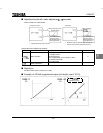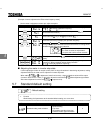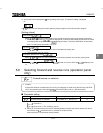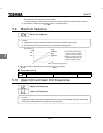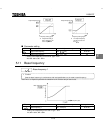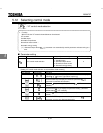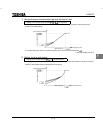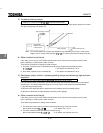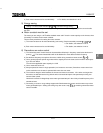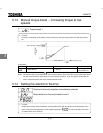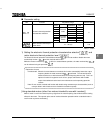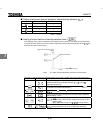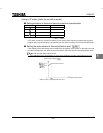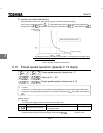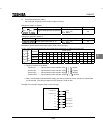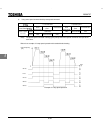
E6580757
E-17
5
3) Each motor constant can be set individually. ⇒ For details, see selection 3 in 6.13.
5) Energy-saving
Setting V/F control mode selection to (automatic energy-saving)
Energy can be saved in all speed areas by detecting load current and flowing the optimum current that fits
the load.
★ Motor constant must be set
The motor you are using is a 4P Toshiba standard motor and if it has the same capacity as the inverter, there
is basically no need to set the motor constant.
There are two procedures for setting the motor constant.
1) The motor constant can be set automatically (auto-tuning). Set the extended parameter
to .
⇒ For details, see selection 2 in 6.13.
2) Each motor constant can be set individually. ⇒ For details, see selection 3 in 6.13.
6) Precautions on vector control
1) The sensorless vector control exerts its characteristics effectively in frequency areas below the base fre-
quency ( ). The same characteristics will not be obtained in areas above the base frequency.
2) Set the base frequency to anywhere from 40 to 120Hz during sensorless vector control ( ).
3) Use a general purpose squirrel-cage motor with a capacity that is the same as the inverter's rated capac-
ity or one rank below.
The minimum applicable motor capacity is 0.1kW.
4) Use a motor that has 2~8 P.
5) Always operate the motor in single operation (one inverter to one motor). Sensorless vector control can-
not be used when one inverter is operated with more than one motor.
6) The maximum length of wires between the inverter and motor is 30 meters. If the wires are longer than
30 meters, set standard auto-tuning with the wires connected to improve low-speed torque during sen-
sorless vector control.
However the effects of voltage drop cause motor-generated torque in the vicinity of rated frequency to be
somewhat lower.
7) Connecting a reactor or surge voltage suppression filter between the inverter and the motor may reduce
motor-generated torque. Setting auto-tuning may also cause a trip (
) rendering sensorless vector
control unusable.



